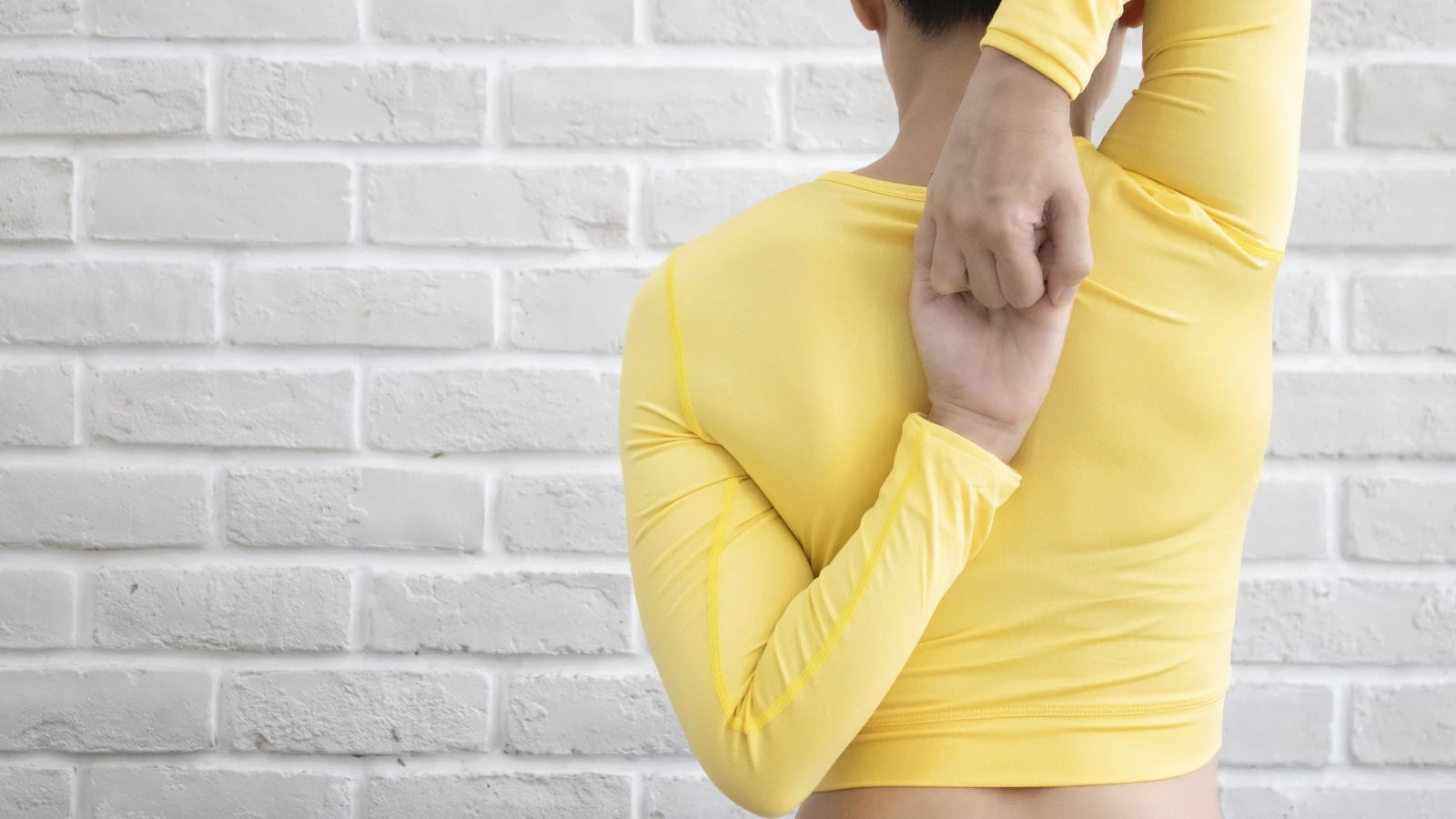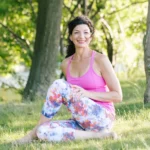Yoga Anatomy: 5 Quick Shoulder Anatomy Tips for Yoga Teachers

Regardless of the style of yoga you’re teaching, there is no doubt you’re working with the shoulders a great deal. Even in a purely restorative practice, there are a few Downward Facing Dog Poses (Adho Mukha Svanasana) or maybe a Thread the Needle Pose (Parsva Balasana), both of which affect the shoulder joint. In fact, in one there’s a focus on external rotation and in the other, the focus is on internal rotation. Do you know which is which?
As a yoga teacher, it’s critical we understand shoulder anatomy, in large part because, in so many styles of practice, we spend a lot of time using our shoulders to support our body. Think about Downward Facing Dog Pose, Plank Pose (Phalakasana), Four-Limbed Staff Pose (Chaturanga Dandasana), Crow Pose (Bakasana), Side Plank Pose (Vasisthasana), Half Moon Pose (Ardha Chandrasana)—I think you get the idea.

So, if that’s the case, why do teachers often struggle with correct cues to the shoulder?
Part of the challenge is because the shoulder joint moves differently from the scapula. The description of anatomical movements of the shoulder joint versus those of the scapula are different and this is often confusing. Additionally, sometimes teachers are not familiar with the difference between flexion, extension, and internal and external rotation and what muscles do what, so without that baseline, it’s really impossible to give correct cues from a movement perspective.
How to Understand Shoulder Movements In Yoga Poses

Here are a few quick tips about the shoulder and just to keep it really focused on teaching, these tips will relate to movement:
- When the arm is reaching to the sky while you’re in Mountain Pose (Tadasana), the shoulder is in flexion. So, saying, “extend your arms overhead” is technically incorrect. However, it’s conversational and most people understand it, so in my view, it’s acceptable to use. However, it’s important that as a teacher, you recognize the shoulder is in flexion.
- The scapula needs to upwardly rotate in order for the head of the humerus to clear the acromion of the scapula when the shoulder is in flexion. So, asking people to “drop the shoulders” when their shoulders are inflection, as in Warrior I Pose (Virabhadrasana I), is incorrect.
- Even though the palms face down in many poses (see the list in the second paragraph, above) the student should still try to create some external rotation. It’s hard because the palms are down and it’s easier to hunch forward. However, your cues to the shoulders should be focused on external rotation, not dropping the shoulders or lifting them toward the ears in these poses.
- Sometimes, it may seem like the shoulders are in internal rotation when in fact, they’re externally rotating. In order to tell, you need to look at the movement from the joint, not the movement the arm is making. So, in Eagle Pose (Garudhasana), even though the arms are wrapping in and the shoulders are adducting, they are also working toward a little external rotation too. If you’re unsure, do the opposite; internally rotate your shoulders in Eagle and you’ll see this is most definitely not what you’d want your students to do.
- It’s harder for students to maintain scapular adduction (hugging the shoulder blades in toward the midline) when they are fighting gravity. So, when you have students “bind their hands behind their back” and then “fold forward” in any pose—as in Wide-Legged Forward Bend Pose (Prasarita Padottanasana) or Standing Forward Bend Pose (Uttanasana) holding opposite elbows and dangling their arms toward the floor—watch how they lose their scapular adduction and keep cueing them to try to keep it. Other ideas include having them bend the elbows or to place a strap between their hands, shoulder-width apart..
Also, read...
No Muscle Is an Island – Are You Making This Common Strength Training Mistake?
Discovering the Living Body: A Yoga Teacher’s Revolutionary Insight on Fascia
The Fascia Connection: Tom Myers on How Postural Habits Get Locked into Our Fascial System
Related courses

Karen Fabian a Yoga teacher, Author, and Founder of Bare Bones Yoga, Karen Fabian, has a background in rehabilitative medicine and healthcare. Her passion for anatomy and human movement is behind all she does, including her work with yoga teachers inside her program, The Yoga Anatomy Blueprint Learning Program. She also earned her Certified Personal Trainer certification in 2017 and Corrective Exercise certification in 2019 with the National Association of Sports Medicine to deepen her knowledge of human movement.
Her books include “Stretched: Build Your Yoga Business, Grow Your Teaching Techniques,” “Structure and Spirit,” e-books called “Key Aspects of Anatomy for Yoga Teachers,” and “Understanding the Why Behind the Cues.” She also has authored her own anatomy manual used in her online and live training.
Karen has her B.S. in Rehabilitation Counseling from Boston University and her Master’s in Health Care Administration from Simmons College. She is an Experienced Registered Yoga Teacher, a Yoga Alliance Continuing Education Provider, and was one of the first Certified Baptiste Yoga Teachers.
She has been teaching since 2002 and lives in Boston.



